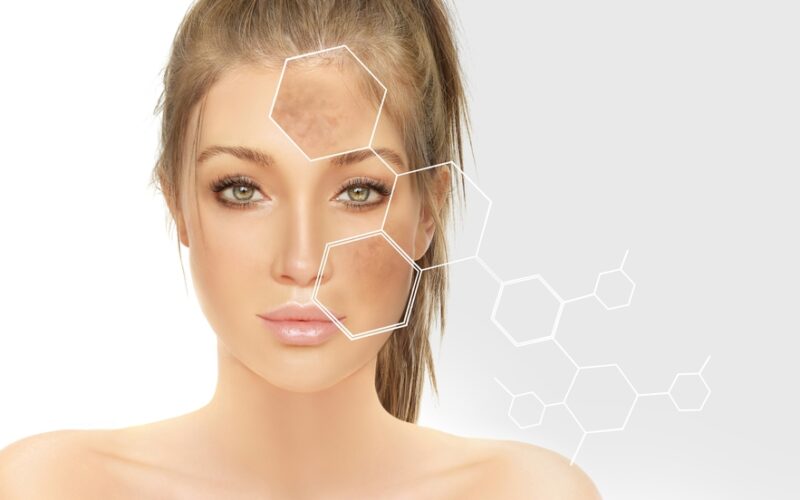Hyperpigmentation—those stubborn dark patches on the skin—affects many people regardless of skin type. These spots appear when excess melanin is produced in specific areas, commonly caused by sun damage, inflammation, hormonal changes, and aging. While many treatments exist, rapamycin for hyperpigmentation has recently gained attention in dermatology. This emerging approach offers a new perspective on treating persistent discoloration that traditional methods may not fully address.
Originally discovered from soil bacteria on Easter Island, rapamycin was first used as an immunosuppressant. Its ability to influence cellular processes has led scientists to explore its benefits for skin conditions, including uneven skin tone. Researchers are particularly interested in its potential for stubborn forms of hyperpigmentation that resist standard interventions.
How Does Rapamycin Affect Skin Cells?
Rapamycin works by inhibiting mTOR (mechanistic target of rapamycin), a pathway that regulates cell growth and metabolism. When mTOR becomes overactive during aging and environmental stress, it can contribute to pigmentation problems. This overactivity is recognized as a factor in various age-related skin changes, including hyperpigmentation.
mTOR inhibition and skin tone are connected in several ways. Rapamycin boosts cell turnover, helping remove pigmented cells more efficiently. Normal skin sheds older cells every 28-30 days, but this process slows with age. By regulating cellular metabolism, rapamycin may normalize this turnover, preventing the buildup of pigmented cells that contribute to dark spots.
Research shows that rapamycin and melanin production are directly linked through complex cellular signaling. Melanin is made by melanocytes, and this production can become irregular due to various factors including UV exposure and inflammation. Rapamycin influences signaling pathways within these cells, potentially normalizing melanin production in problem areas.
Additionally, rapamycin reduces oxidative stress and inflammation, both key contributors to hyperpigmentation. This anti-inflammatory property makes rapamycin particularly interesting for post-inflammatory hyperpigmentation, which often occurs after acne, eczema, or skin injury.
Can Rapamycin Reduce Hyperpigmentation?
Studies suggest rapamycin can lighten skin or reduce pigmentation issues in certain cases. A 2019 study in the Journal of Investigative Dermatology found that topical rapamycin reduced UV-induced hyperpigmentation in human skin samples, decreasing both intensity and duration of pigmentation after sun exposure. This finding suggests promising applications for sun-related pigmentation issues.
Another study on rapamycin and age spots showed the compound reduced the appearance of senile lentigines (age spots) in older adults. Participants showed noticeable improvement with consistent application, suggesting potential benefits for age-related pigmentation concerns that often prove resistant to other treatments.
Unlike treatments such as hydroquinone that directly inhibit melanin-producing enzymes, rapamycin works more broadly by affecting cellular metabolism and addressing multiple factors that contribute to hyperpigmentation. By targeting underlying cellular processes rather than just the melanin itself, rapamycin may provide more sustainable improvements in skin tone.
Most studies have been conducted in laboratories or small trials, and larger studies are needed to fully establish rapamycin’s effectiveness for different types of hyperpigmentation. Current research represents early-stage investigation that requires further clinical validation.
How to Use Rapamycin for Skin Tone Improvement
Topical application is most common for cosmetic skin concerns and generally considered safer than systemic administration. How rapamycin affects skin color depends on concentration, formulation, and individual factors including skin type and the specific nature of the hyperpigmentation being treated.
Topical formulations typically contain 0.1% to 1% rapamycin in a cream or serum. These products penetrate the skin’s outer layer to reach melanin-producing cells. With consistent use, improvements may appear after several weeks, though optimal results typically require 8-12 weeks of regular application.
For best results, skincare experts recommend using rapamycin products in your evening routine (as the compound may increase sun sensitivity), applying sunscreen diligently during the day, being patient with treatment, and considering combining rapamycin with complementary ingredients like antioxidants or gentle exfoliants.
Some dermatologists recommend pulse therapy—using rapamycin for a specific period followed by a break—to maximize benefits while minimizing side effects. This approach may help prevent tolerance development while maintaining positive effects on pigmentation. Your healthcare provider can help determine the most appropriate usage pattern for your needs.
Oral rapamycin is generally not recommended for cosmetic concerns due to its immune system effects and potential side effects. The systemic absorption creates a less favorable risk-benefit profile for purely cosmetic applications.
Risks and Limitations
Topical rapamycin may cause skin irritation or redness, dryness or peeling, increased sun sensitivity, and temporary changes in skin texture. These effects are usually mild and diminish as skin adapts to the treatment. Most users find these side effects manageable, particularly when following proper application guidelines and sun protection practices.
More significant concerns exist with systemic use, including immune suppression. Even with topical application, there’s a theoretical risk of systemic absorption, though studies suggest this is minimal with properly formulated products designed for dermatological use.
Consult a dermatologist before starting any rapamycin regimen, especially if you have sensitive skin, are pregnant or breastfeeding, have an autoimmune condition, or use other intensive skin treatments. Professional guidance is essential to determine whether rapamycin is appropriate for your specific concerns.
Conclusion
Rapamycin shows promise for addressing hyperpigmentation through its effects on cellular metabolism, melanin production, and inflammation. Its mTOR-inhibiting mechanism offers a different approach from traditional skin-lightening agents and may be particularly helpful for age-related pigmentation.
Early studies suggest topical rapamycin formulations may reduce certain types of hyperpigmentation, including sun-induced darkening and age spots. While results can be significant, they typically develop gradually and may require ongoing maintenance to sustain improvements.
If you struggle with persistent hyperpigmentation, schedule a consultation with Heally to determine if rapamycin-based treatments might help your skin concerns. Our providers can offer personalized advice based on your specific situation and help develop a comprehensive approach to addressing your unique pigmentation issues.
Sources
NIH: Induction of melanogenesis by rapamycin in human MNT-1 melanoma cells
NIH: Shining Light on Autophagy in Skin Pigmentation and Pigmentary Disorders
Dermatology Times: Topical rapamycin improves facial skin lesions in tuberous sclerosis complex
Book Free Consultation
Book Free Consultation

